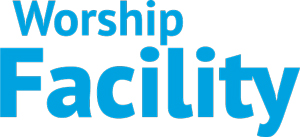Welcome back everyone! Last week a reader asked me about an audio issue that a lot of churches have, which is having bad audio from the pastor’s microphone. Some of the best church sound systems in the world can suffer from this one simple problem. It can really be a travesty! If there is anything a church sound system is designed to do, it is to provide clear and accurate transmission of the spoken word. All other needs and priorities take a back seat to this one critical requirement. We’ve probably all experienced this problem at some point.
The goal
First, we need to discuss the simple yet important sound qualities we’re looking for when it comes to clear delivery of the spoken word. Sound from the pastor or presenter’s microphone should be:
- Clear
- Intelligible
- Crisp, but not too bright
- Solid, but not too boomy
- Rich, but not too thick or muddy
- And of course, there shouldn’t be any feedback!
Does your pastor sound like that? If not, I’ve got some good news! You can start getting the sound you want with a few basic tips.
Feedback
Let’s talk about feedback first. This is almost always a location or proximity issue, and sometimes it’s also an issue of microphone choice. The best way to prevent feedback is to place the microphone close to the source (the pastor’s mouth), and behind any loudspeakers.
When it comes to the pastor’s mic, a common problem in many churches is the clip-on lavaliere microphone. It is often placed too low on the body or too far away from the pastor’s mouth (optimum location is 6-8” away from the chin). Not only can this cause feedback, it will also cause a weak, thin vocal sound through the system.
If feedback is a constant worry, no matter how you position the microphone, you may need to look into a more directional lavalier microphone (cardioid instead of omni-directional). Or you may want to consider using a low-profile headset or earworn microphone like the Countryman E6, or Point Source Audio CR-8S, or DPI d:fine series.
Tone and other frequency characteristics are affected by proximity, but they are also affected by the particular microphone being used and the acoustic properties of the room. If you’ve already experimented with mic position and mic type, then it might be time to move on to some basic EQ.
EQ Tips for the Pastor’s Mic:
- Engage the low-cut (or high-pass) filter, rolling off frequencies below 100Hz
- Boost 200Hz – 300Hz for more depth
- Cut 400Hz – 600Hz to reduce any muddiness
- Cut 800Hz – 2kHz to reduce nasal or honky tones
- Boost 1kHz – 4kHz for added clarity and intelligibility
- Cut 4kHz – 6kHz if there is too much presence or if the sound is too thin
- Use the sweepable mid-EQ or parametric EQ to find the tonal sweet spot by boosting or cutting by 3-6dB then sweeping the frequency bands to hear the difference in tonal quality
- Above all – Practice and listen! Don’t worry about what your channel EQ looks like. Go with what sounds best.
There are no rock-solid rules for EQ-ing. After all, every voice and mic combination will yield different results. Test out the quick tips here, but make sure you experiment and try different EQ settings.
Dynamic changes in speaking volume can also be a factor in overall sound quality. As we speak, we often change the volume of our voices, especially if we want to MAKE A POINT! While this can be engaging, it may also be disruptive if our sound system doesn’t have a certain amount of dynamic control in the way of a compressor.
Quick Tips for Compression:
- Use a channel insert or effects bus for a vocal compressor on the pastor’s mic
- Set the “attack” setting to fast
- Set the “release” setting to medium/slow
- Set the “ratio” setting between 1:2 and 1:6 depending on how strong you want the compressor to squash the signal peaks
- Adjust the “threshold” level so the compressor kicks in as the dynamic speaking volume becomes too loud
Remember, there are no hard and fast rules for resolving all of the sonic issues you may have with the pastor’s mic. Experiment. Try different techniques. And listen.
Does it sound clear and natural?
You may find it helpful to have someone read aloud while you get familiar with various mic placement, EQ, and compression settings. Keep at it, and you’ll find the sweet spot.
Check your frequencies
One other thing to discuss is RF coordination, make sure your wireless units are on all legal FCC frequencies, so you don’t step on anyone’s signals and they don’t step on yours. You may be fined or interrupt a major network. So look into software to help you use the right open frequencies, there are products of all value available as well as some free apps. Here’s to your great sound!


